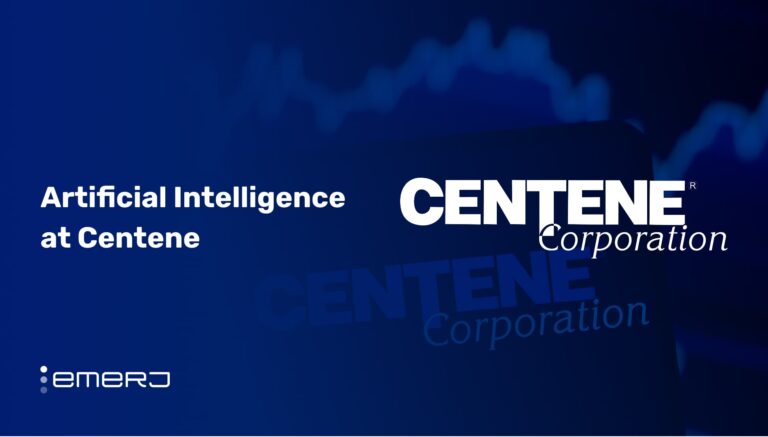Headquartered in Munich and founded in 1916 in Germany, the BMW Group is a multinational vehicle manufacturer that manufactures vehicles in Germany, the United Kingdom, the United States, Brazil, Mexico, South Africa, India, and China. In the US alone, BMW brand sales totaled 87,615 vehicles in the first quarter of this year, which represents a 3.7% increase from the same quarter a year prior.
BMW has integrated AI across its organization, spanning multiple areas of operations, including sales, customer experience, procurement, and product development in areas such as crash testing and autonomous driving.
BMW’s future plans regarding AI to further optimize logistics include conducting research into the use of humanoid robots for complex assembly tasks and intelligent transport systems.
This article examines two use cases at BMW: one that occurs during the manufacturing process in BMW plants and another that affects the actual vehicles produced.
- Voice assistant for safer driving: Using natural language processing, machine learning, and cloud-based AI to enhance driver convenience and interaction with the added benefit of improving driver safety
- Optimal predictive maintenance to save time and money: Using data analysis, predictive maintenance, and machine learning to prevent assembly line disruptions by identifying defects as early as possible.
Voice Assistant for Safer Driving
According to the World Health Organization fact sheet, 1.19 million people die each year in car accidents. Beyond the tragic loss of human lives, there is a quantifiable cost. A fact sheet by the United Nations finds the impact on the global economy for traffic-related mortality and injury is in the “billions.”
In 2019, BMW introduced the Intelligent Personal Assistant (IPA) in its vehicles, enabling users to operate their cars and access features and information simply by speaking. It’s part of a larger shift toward software-defined vehicles. The same press reports claim that BMW leverages AI training data in conjunction with real-world driving experiences to simplify vehicle operation for drivers in the long run.
Before the rollout of IPA, drivers would have to physically navigate touchscreens for navigation tasks or use physical buttons to adjust features such as climate settings.
Touchscreen navigation can lead to distracted driving or require drivers to pull over to the side of the road to address the issue they were trying to resolve. Research from the European Transport Safety Council confirms that in-car touch screens are detrimental to driver safety from a traffic safety perspective. Even controlling the music for 2 seconds while driving at a speed of 39 mph results in the driver traveling blind for approximately 98 feet.
Providing drivers with customized driving preferences, such as seat heating or frequent destinations, eliminates the need for them to repeatedly make these selections.
BMW employees, such as developers, were also impacted. Previously, developers had to hard-code user interaction flows. With IPA, developers no longer need to conduct such intensive software operations in places where machine learning offers more adaptive, user-centric experiences.
BMW claims that its IPA system enables drivers to interact with their vehicles in a more intuitive and human-like manner. As claimed in an article by DesignWorks, a BMW Group subsidiary, the personal assistant not only improves the customer experience but also reinforces brand differentiation. The press materials also note IPA relies on cloud-based AI services to continuously improve capabilities by pushing over-the-air updates.
BMW also claims that their IPA features are supported by the following AI-related capabilities:
- Conversational AI: Engages in casual, human-like dialog to build rapport with the driver, even answering open-ended questions like “What’s the meaning of life?” and offering personalized replies such as playing relaxing music in response to a driver mentioning feeling stressed.
- Behavioral Adaptation and Machine Learning: Learns from drivers’ behavior over time by recognizing patterns in drivers’ interactions and preferences and then using this knowledge to inform suggestions. One example is recommending a driver’s preferred route based on past driving behavior.
- Natural Language Processing (NLP): Uses AI to understand natural speech and issues commands based on context, responding naturally to phrases such as “I’m cold” by adjusting the cabin temperature.
While BMW hasn’t disclosed specific financial data regarding ROI or cost efficiencies, it’s evident that cost efficiencies are improved. Remote software upgrades, done via over-the-air updates, reduce software-related dealership visits by approximately 45%. Also, the real-time assistance IPA provides leads to fewer calls to customer support centers.
Behind the scenes, BMW’s Proactive Care service leverages AI to analyze vehicle data, predict maintenance needs, and proactively contact customers through in-car notifications.
While exact numbers aren’t disclosed, this approach leads to a reduction in customer support calls by addressing issues before customers need to initiate contact, relieving some of the pressure on BMW workshops. The IPA also provides opportunities for revenue generation. The personalized experience IPA offers potentially increases customer satisfaction and loyalty.
Optimal Predictive Maintenance to Save Time and Money
Recalls are very costly for car manufacturers. When car manufacturers issue a recall, they incur expenses due to lost production time and the replacement of faulty parts, not to mention the resulting reputational damage. Replacing defective parts might seem nominal at first glance. However, it’s essential to take into account the sheer number of cars involved in recalls, a number that can reach into the millions.
In 2024, BMW issued a recall affecting more than 720,000 vehicles due to an issue with the water pump’s electrical connector in affected cars. The expense was expected to reach a “high three-digit million (euro) amount.”
A 2023 company blog post sheds light on how BMW Group Plant Regensburg utilizes the innovative analysis system in assembly to prevent unplanned stoppages before they occur, offering proactive and preventive capabilities through predictive maintenance.
Potential disruptions are minimized by using data analysis for faster, preventative response. This step-by-step breakdown explains how the AI-supported system works:
- Transport Setup
Vehicles are mounted on either mobile load systems or skid carriers to move through the assembly line in a chain-based conveyor system. - Possibility for Issues
Any technical fault discovered as the vehicle proceeds through the conveyor system has the potential to bring assembly lines to a standstill. - Monitoring System
The system that the innovation team at BMW Group Plant Regensburg monitors throughout the production process detects potential defects as early as possible, utilizing existing data from installed components and conveyor element control. - Alert
An alarm will sound if an anomaly is found. - Removal of Affected Conveyor Elements
Identified elements are promptly removed from the assembly line and are repaired, having no effect on the production process.
In the same blog post, project manager Oliver Mrasek asserts that, for BMW, predictive maintenance is not a standalone solution. BMW developed machine learning models in-house and implemented them in the system.
Heatmaps color-code abnormalities to visualize the model’s findings. Mrasek claims that this allows a targeted response to fault patterns by mapping them to specific components.
In conjunction with this predictive maintenance capability, BMW specialists can locate a specific vehicle at any point in the production process.

A screenshot of the in-app view a BMW Specialist sees of a vehicle’s specific location in the assembly process. (Source: BMW)
While the company doesn’t reveal tangible outcome data for its Regensburg plant, the ability to prevent unplanned stoppages leads to cost savings, as outlined in the same press materials.
Specifically, the same blog post claims that the system has reduced assembly line disruptions by 500 minutes a year. The number may not seem significant at first, but understanding its context is essential to fully appreciate its importance. A vehicle rolls off the assembly every 57 seconds at the Regensburg plant, so it’s crucial to minimize downtime to maintain production efficiency.



















